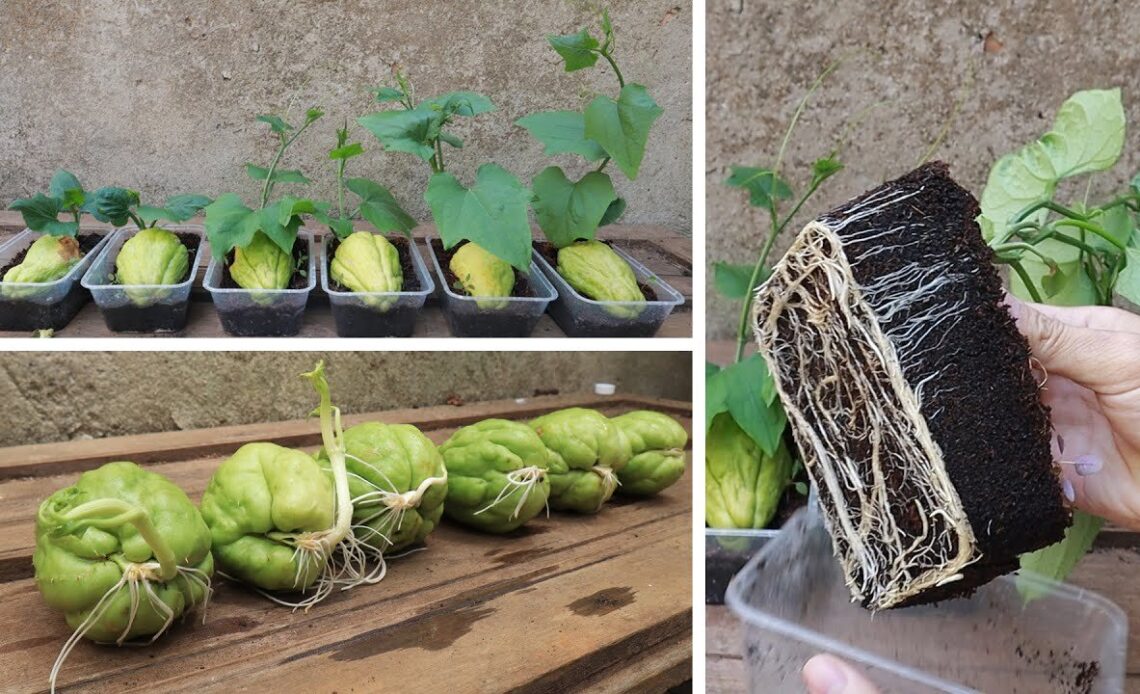Chayote, also known as **Mexican Squash** or **vegetable pear**, is a unique and versatile plant that thrives in warm climates. With its mild flavor and high nutritional content, it’s becoming increasingly popular in gardens worldwide. If you’re looking to grow your own chayote, whether in your backyard or on a small plot, this guide will take you through the steps, from planting to harvesting. With proper care, you can enjoy this nutritious vegetable and its abundant harvest.
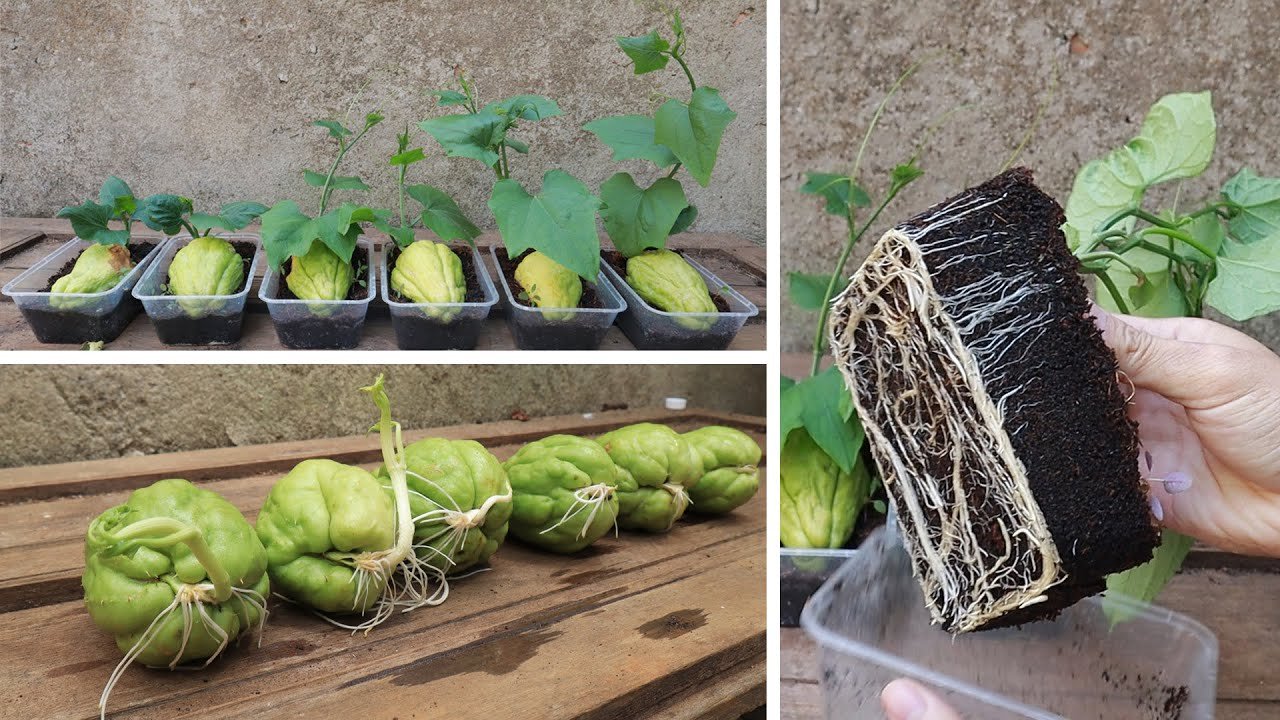
**What Is Chayote?** Chayote (Sechium edule) is a type of gourd native to Central America and is widely cultivated in tropical and subtropical regions. It is known for its green, wrinkled appearance and pear-like shape. Chayote can be eaten raw, cooked, or used in various dishes, including stews, salads, and even desserts. It is rich in vitamins and minerals, especially **vitamin C**, **fiber**, and **folate**, making it a healthy addition to any diet.
**Step-by-Step Guide to Growing Chayote:**
### **1. Choosing the Right Planting Material:**
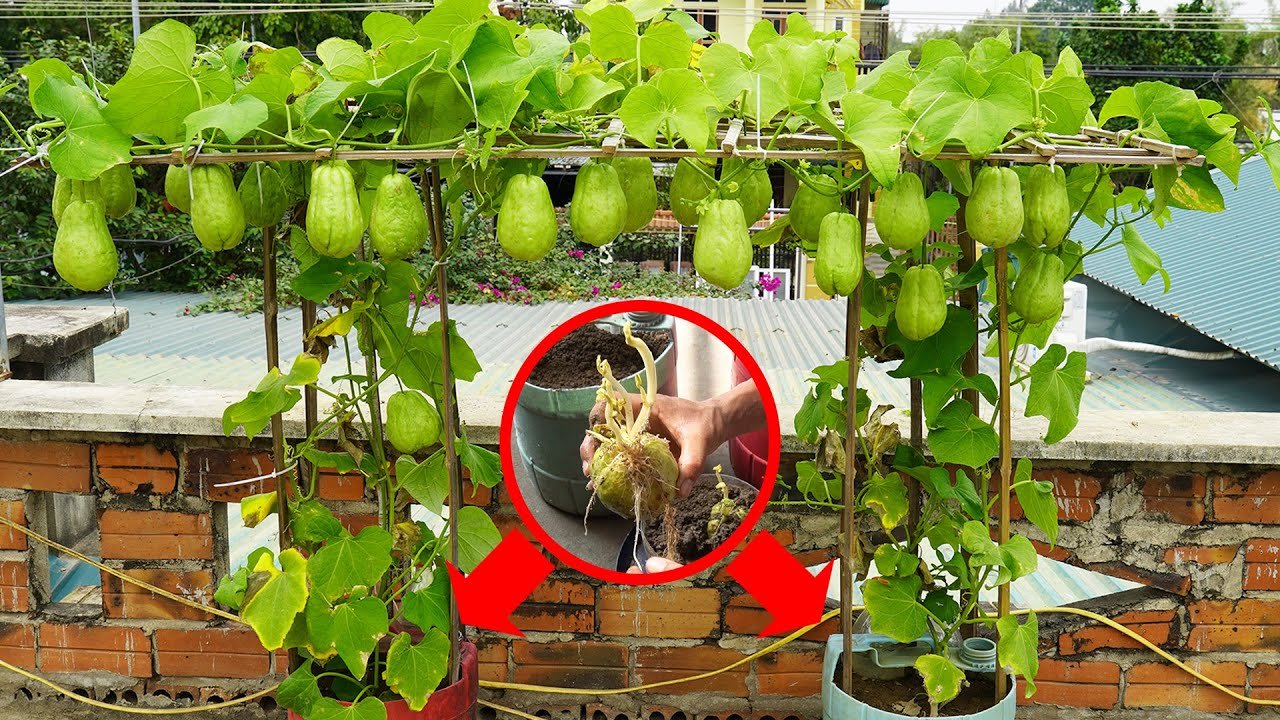
To start, you’ll need a **chayote fruit** to plant. Unlike many other vegetables, chayote is often grown from the whole fruit rather than seeds. It’s essential to pick a firm, fresh fruit with no bruising or damage.
– **Seedless Option:** If you have access to a local farm or garden center, you might find pre-sprouted chayote plants, but in most cases, the fruit itself is your best starting point.
– **Selection:** Choose a healthy, ripe chayote from a reputable source to ensure the best growth. Avoid fruits that have already begun to sprout unless you’re planning to plant them immediately.
### **2. Preparing the Soil:**
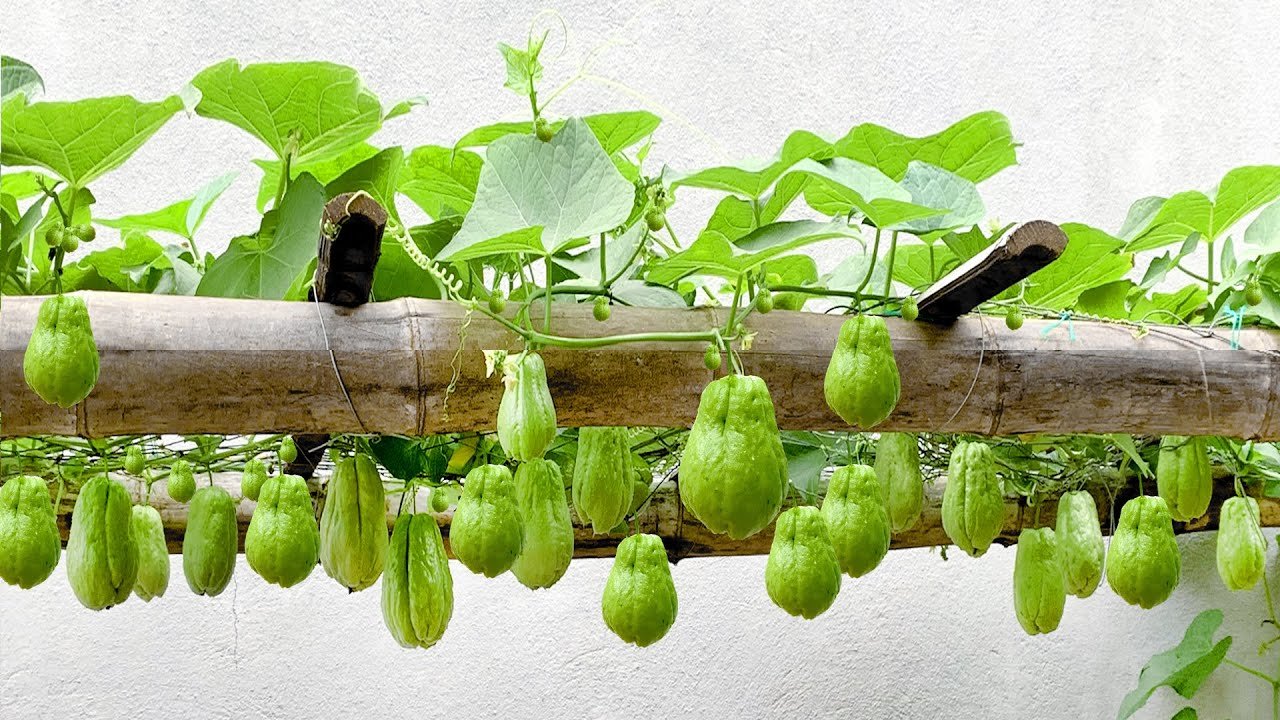
Chayote prefers rich, well-drained soil that is high in organic matter. Here’s how to prepare the soil for planting:
– **Soil Type:** Chayote thrives in sandy loam or loamy soil. Ensure the soil is loose and not compacted to promote root growth.
– **pH Levels:** The soil should have a pH between **5.5 and 7.0**, which is slightly acidic to neutral.
– **Fertilizing:** Before planting, mix compost or well-rotted manure into the soil to enrich it. This will ensure the plant has the nutrients it needs to grow strong.
### **3. Planting the Chayote:**
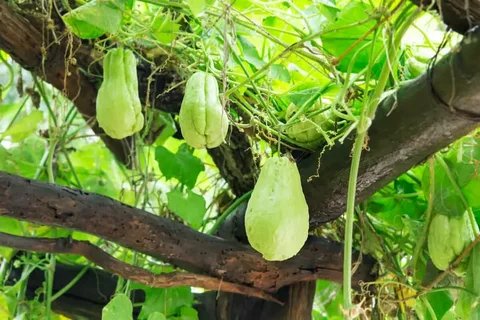
When it comes to planting, follow these steps:
– **Cut the Chayote (Optional):** You can plant the whole chayote fruit, or if it’s large, you can cut it in half. Each half should contain a seed or sprout.
– **Plant the Fruit:** Dig a hole that’s about **6-8 inches deep**. Place the chayote horizontally (or cut side down if halved) in the hole. Make sure that the sprouting section is facing upward.
– **Spacing:** Space the plants about **4-5 feet apart** to give them room to grow and spread.
### **4. Caring for Your Chayote Plant:**
– **Watering:** Chayote needs consistent moisture, especially during the early growing stages. Water the plants regularly, ensuring the soil stays moist but not waterlogged. Once established, chayote plants are relatively drought-tolerant.
– **Sunlight:** Chayote plants love the sun. Make sure to plant them in a location that receives **6-8 hours of direct sunlight** per day.
– **Mulching:** Apply a layer of mulch around the plants to retain moisture, suppress weeds, and keep the roots cool.
### **5. Supporting the Vines:**
Chayote is a climbing plant, and it requires support as it grows. As the vines extend, they will need a trellis, fence, or similar structure to climb on.
– **Trellis or Support:** Use a sturdy trellis or fence that can support the weight of the plant as it grows. Chayote vines can reach lengths of up to **30 feet**, so the structure should be tall and strong.
– **Training the Vines:** As the vines grow, gently guide them along the support structure to keep them organized and prevent damage to the stems.
### **6. Harvesting Chayote:**
Chayote typically takes **3-4 months** to reach maturity, depending on the climate. The fruit will begin to develop once the vine is well-established, and you’ll notice the fruits hanging from the vines.
– **When to Harvest:** The fruit is ready to harvest when it reaches a size of **4-6 inches** in length. The chayote should feel firm to the touch, and its skin should be green with slight wrinkling.
– **How to Harvest:** Simply twist the fruit off the vine, or use a sharp knife or pruning shears to cut the fruit away from the vine.
### **7. Storing and Using Chayote:**
– **Storage:** After harvesting, store the chayote in a cool, dry place. It can be kept for **up to two weeks** at room temperature. If you want to store it for a longer period, consider refrigeration.
– **Culinary Uses:** Chayote can be eaten raw, sautéed, boiled, steamed, or roasted. It has a mild flavor, making it versatile for salads, soups, and side dishes.
Growing chayote is an easy and rewarding gardening experience, especially for those who love home-grown produce. By following the steps outlined in this guide, you can grow chayote successfully in your garden, enjoy its health benefits, and use it in a variety of recipes. Whether you’re an experienced gardener or just starting, chayote is a fantastic plant to add to your garden.
